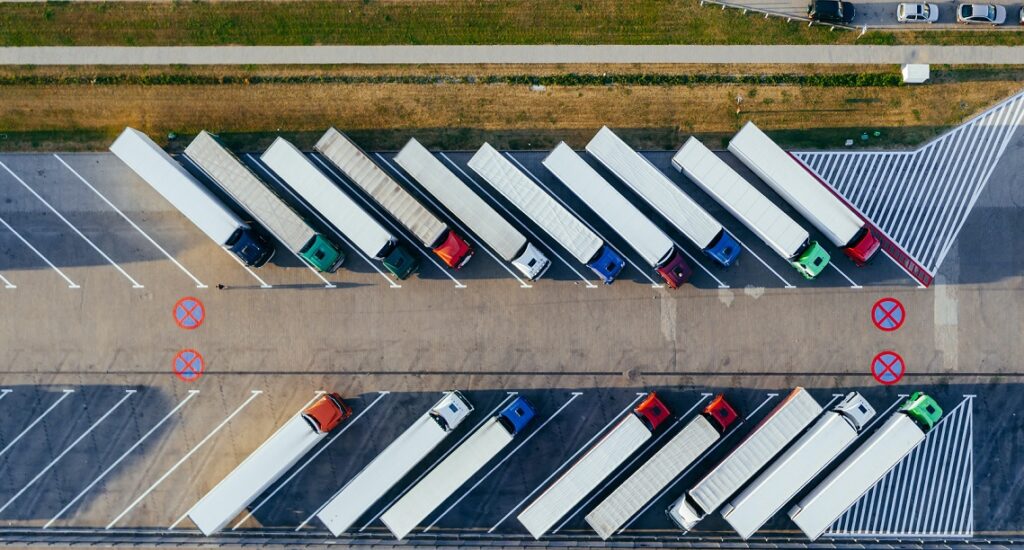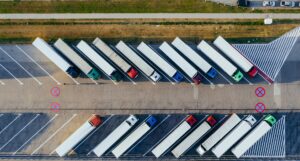The impact of forklift and cargo handling machinery accidents and how to enhance safety within an organization
Forklifts are indispensable in warehouses, factories, and construction sites, facilitating the movement of heavy loads with ease. However, their convenience comes with inherent risks. Forklift accidents can lead to devastating consequences, including injuries, fatalities, property damage, and financial losses. Understanding the top causes of these accidents is crucial for prevention and safety enhancement.
Based on reports from National Safety Council (NSC), approximately 110,000 forklift accidents occur yearly, resulting in 61,800 non-serious injuries, 34,900 serious injuries, and 85 fatalities. These figures are shockingly high and have far reaching impacts.
Top Causes of Forklift Accidents
- Operator Error: Human error is a leading cause of forklift accidents, contributing to approximately 70% of all incidents according to the Occupational Safety and Health Administration (OSHA). Factors such as improper training, distraction, and recklessness significantly increase the likelihood of accidents.
- Unsafe Operating Conditions: Poorly maintained facilities, cluttered aisles, inadequate lighting, and uneven surfaces create hazardous environments for forklift operations. These conditions increase the risk of collisions, tip-overs, and other accidents.
- Overloading: Exceeding a forklift’s rated capacity is a common cause of accidents. Overloading compromises stability, making the vehicle prone to tipping over, especially during turns or sudden stops.
- Improper Loading and Unloading: Incorrectly loaded or unbalanced loads can cause forklifts to become unstable, leading to accidents during lifting, transporting, or stacking operations.
- Lack of Visibility: Limited visibility due to blind spots, obstructed views, or poor lighting increases the likelihood of collisions with pedestrians, structures, or other vehicles.
The Impact of Forklift Related Accidents
Forklift accidents not only jeopardize the safety of workers but also have significant repercussions on business operations, time management, costs, and financial stability. Understanding the magnitude of these impacts underscores the importance of accident prevention measures, safeguarding both personnel and organizational interests.
- Injuries: Forklift related Accidents cause thousand of injuries annually, ranging from minor bruises to severe trauma such as fractures, amputations, and even fatalities. Organization strives to eliminate any form of accidents to ensure a safe working environment.
- Operational Disruption: Forklift accidents disrupt workflow and operational efficiency, leading to damages in equipment, racks, structures, and vehicles. This results in delays in production, shipping, and inventory management.
- Time Loss: Time is a valuable resource in any business, and forklift accidents consume precious time in accident response, investigation, and cleanup. Research from the National Institute for Occupational Safety and Health (NIOSH), indicates that businesses lose an average of 24 hours per forklift accident, including time spent on incident reporting, equipment repair, and personnel reassignment.
- Financial Costs: Forklift accidents incur direct and indirect costs that strain financial resources. According to the Occupational Safety and Health Administration (OSHA), the average cost of a forklift accident exceeds $38,000, considering medical expenses, property damage, productivity losses, and legal fees.
- Insurance Premiums: High accident rates can lead to increased insurance premiums, adding to the financial burden on businesses. The National Safety Council (NSC) reports that forklift accidents account for a significant portion of workers’ compensation claims, contributing to rising insurance costs for affected industries.
The Role of Video Technology in Safety
Recognizing the importance of proactive safety measures, many industries are turning to technology to mitigate the risks associated with forklift operations. One such solution is the integration of cameras and video monitors within forklifts and other material handling equipment.
Greater Visibility
- Rear View Only vs. Surround View Visibility: Equipping at least one rear-view camera on a forklift is vital for improving rear visibility. However, the full potential of safety and efficiency can be realized by implementing multiple cameras strategically placed around the forklift, providing operators with a comprehensive surround view of their environment.
- Real-Time Display: Video monitors display live footage, allowing operators to see and assess potential hazards to avoid accidents.
- Recording Capabilities: In the event of an accident or near-miss, system equipped with recording function provides video footage as documentation for incident investigation, enabling organizations to identify root causes and implement safety measures, as well as teaching tool for ongoing operator training.
Benefits and Importance
- Enhanced Safety: Video provides as an additional layer of visibility and protection, reducing the risk of accidents caused by limited visibility or operator error. Similar to most late model personal vehicles equipped with back-up and or blind spot cameras, this enhances overall safety when operating a forklift, especially in a fast-paced commercial environment where situation is constantly evolving.
- Risk Mitigation: By capturing and analyzing video and data such as impact sensor, organizations can identify patterns of behavior or operational issues that contribute to accidents, enabling targeted interventions, continuous safety trainings, and risk mitigation strategies.
- Safety Compliance: Implementing video to enhance overall visibility for operators demonstrates a commitment to safety and may help organizations comply with safety guidelines and industry best practices.
- Cost Savings: Reducing forklift accidents can translate into cost savings for businesses. Research conducted by the National Institute for Occupational Safety and Health (NIOSH) that every dollar invested in safety yields a return of up to six dollars in cost savings, underscoring the financial benefits of proactive safety measures. This reduces overall accident-related expenses, personnel downtime including medical costs, property damage, and insurance premiums.
Factors to Consider
- Implementing safety measures with ongoing trainings and feedback contribute to a positive safety culture. This fosters employee morale and retention, demonstrating a commitment to the well-being of the staff.
- Operational Efficiency: By minimizing the risk of accidents and operational disruptions, video technology enhances workflow continuity and productivity. Real-time monitoring enables proactive intervention to address potential hazards promptly, ensuring smooth operations.
- Time Management: Video recording streamlines accident response and investigation processes, reducing downtime associated with incident management. Immediate access to recorded footage expedites incident review and resolution, allowing businesses to allocate resources more efficiently.
Final Thoughts
Forklift accidents pose multifaceted challenges to business operations, time management, costs, and financial stability. Integrating video technology offers a strategic approach to mitigate these challenges, enhancing visibility, safety, operational efficiency, and financial performance. By investing in proactive safety measures, organizations can protect their workforce, assets, and bottom line while maintaining a competitive edge in a dynamic environment. Embracing innovation and prioritizing safety are essential steps toward building a resilient and sustainable workplace in the face of evolving risks and challenges.



